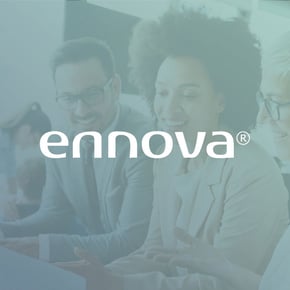If you want to create an inclusive culture, there are a lot of different things that you can start doing - both internally (recruitment, employee policy, onboarding, etc.) and externally (corporate communications and branding). But how do other organizations approach diversity, equity, and inclusion? We have gathered some real-life examples of how organizations are strategically addressing DE&I in their organizations.
DE&I is more than Gender
First, an important note, when working with diversity, equity, and inclusion: It is much more than just gender. Organizations that focus only on gender when talking about DE&I have a long way to go. The DE&I-conversation should revolve around several other areas, including:
-
LGBT+
-
Ethnicity
-
Age
-
Ability/disability
Keep all these areas in mind when you are working with DE&I-initiatives. This will give you the best possible basis for making improvements in the field. You can read more about what diversity, equity, and inclusion means in a corporate context here.
Examples of Actual DE&I-Initiatives
Working with diversity, equity, and inclusion in the workplace is a complex discipline. If you’re not sure where to start, we’ve gathered some inspiration for you in the form of real-life examples of DE&I-initiatives that other organizations have worked with and implemented.
IKEA: A committed and professional DE&I-strategy
IKEA has a very dedicated and professional approach to diversity, equity, and inclusion. Here are some examples of how and where they have implemented DE&I-initiatives:
-
Internal wording: IKEA focuses on their work in their employee handbook, and they pay a lot of attention to the inclusiveness of the words. An example: Why call it a maternity gift when you can call it a baby gift? Why call it paternity leave when there are also co-mothers?
-
Recruitment and onboarding: As part of the onboarding process at IKEA Denmark, every new employee goes through bias training. Recruiters receive bias training on a regular basis and all leaders receive bias training as a part of the leader training. This is done to prevent inappropriate and unconscious bias against minorities or other groups of people in the organization.
-
An external focus on intersectionality awareness: To create an inclusive culture, IKEA focuses on intersectionality awareness as part of its product branding. An example is the branding of a saucepan with the text “can be operated by males, females and everyone in between”. Not a big deal in itself – but it says a lot about how IKEA thinks and works.
-
Visual representation of people: At IKEA, they make sure that they have a diverse visual representation of people included in their brand materials, recruitment process etc. This is important to support their existing employees to be who they want to be, but it will also attract all kinds of people to the organization, because they can see that there is room and space for them to be exactly who they are in the workplace.
The examples above are based on a larger strategy, and they are not necessarily something you can just go out and implement in your organization starting from today. Before you start implementing DE&I-initiatives, we recommend that you have a strategy and a plan in place – and of course have ensured buy in from top management.
Watch webinar: How to work with diversity, equity and inclusion
Watch our webinar “How to work with diversity, equity and inclusion + experiences from IKEA Denmark” for more insights on how IKEA works with DE&I.

King Games: Dedicated mentorship programs
King Games, known for Candy Crush, discovered through employee surveys that their non-male employees felt marginalized. They launched several diversity and inclusion programs, including a mentorship program that paired leaders with more than 250 non-male employees. This initiative led to an increased in new female hires, which went from 34% to 40% in one year.
Netflix: Advancing Diversity Through Strategic Hiring and Inclusive Programs
Netflix focused on intentional hiring and promotion practices that emphasized attracting candidates from diverse backgrounds. This approach included training recruiters to recognize bias and use nontraditional methods to find candidates, collaborating with diversity-focused organizations, and launching technical bootcamps, such as the one with Norfolk University, to address underrepresentation in the tech industry.
These efforts have improved the company's ability to connect with a wider range of audiences and develop content that resonates globally. Employee Resource Groups (ERGs), such as Black@Netflix and Dream@Netflix, were created to provide platforms for underrepresented groups to connect, share experiences, and influence the company decisions and initiatives.
Turn DE&I into Measurable Results
Inclusion starts with listening. Discover how our DE&I advisory helps leaders create workplaces where everyone feels valued and supported.
DE&I-Work in Recruitment
The biggest challenge to inclusion in organizations is unacknowledged bias in the recruitment process – bias that you don’t even know you have, which (for obvious reasons) makes it difficult to change. Therefore, creating an inclusive culture means first addressing your (unknown) biases. And you need to do this early: in the recruitment process.
An example of unconscious bias could be the wording of your job proposals. The wording can appeal more to men or women, depending on the specific words you use. Replacing the word “competent” with “qualified” may attract more female applicants. It can be difficult to identify these bias nuances in the language, but in fact there is software, such as develop Miscellaneous, that can screen posts and attract applicants than you typically attract.
If the data shows that the candidates invited to a job interview are not sufficiently diverse, you can try to reduce the bias of the employment committee by removing the candidates’ name, gender, age, and photo from the selection process.
The challenges of diversity balance is an area of great concern, and every day we learn more about the efforts needed to bring about positive change.
Bias is and will remain a barrier to diversity. Recruiting with bias in mind is an important step. But recruitment alone isn’t enough. It must be complemented by ongoing training in curiosity about the perspectives and attitudes of others, so that our fixed assumptions are challenged, and our decision-making is improved.
Get in touch with usReady to Strengthen Your Employee Experience?
Our experts are ready to help you and your organization collect the right data and turn it into action. From survey setup to consulting, we're with you every step of the way.
|

